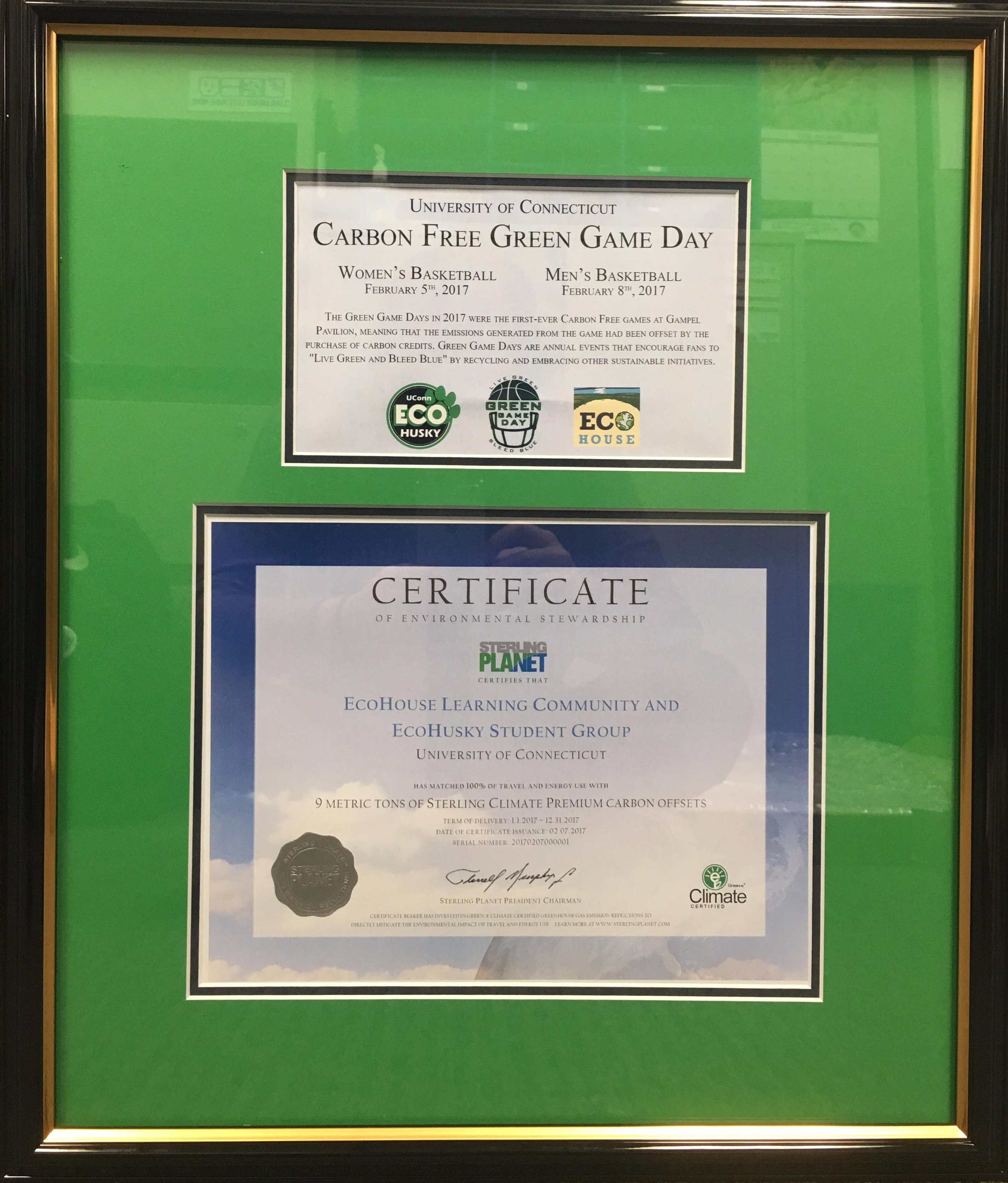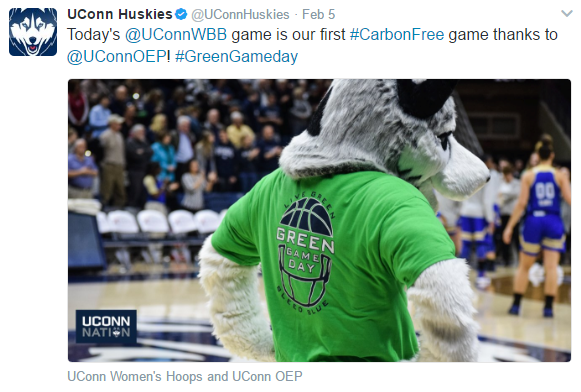 Every spring, volunteers from the EcoHusky student group and EcoHouse learning community come together to raise environmental awareness at Basketball Green Game Days. By teaching fans how to recycle, and collecting bottles at the end of the game, volunteers always play an integral role in making these events “green.” This year’s Green Game Days were special because, for the very first time, the Office of Environmental Policy purchased carbon offsets to make the games carbon-free!
Every spring, volunteers from the EcoHusky student group and EcoHouse learning community come together to raise environmental awareness at Basketball Green Game Days. By teaching fans how to recycle, and collecting bottles at the end of the game, volunteers always play an integral role in making these events “green.” This year’s Green Game Days were special because, for the very first time, the Office of Environmental Policy purchased carbon offsets to make the games carbon-free!
Carbon offsets are credits purchased that represent the reduction of an amount of carbon dioxide emissions. In cases such as powering a basketball game, where it is difficult or impossible to reduce associated emissions, a carbon offset can be purchased to fund the reduction of greenhouse gases elsewhere. This is a great tool for organizations that would like to mitigate their carbon impacts, but when it is not feasible for them to do so directly.
 We would like to thank all of our volunteers for their time and enthusiasm. With their help, we were able to collect enough bottles to donate $40 to the Campus Sustainability Fund to support more programs and initiatives to raise environmental awareness. We would also like to thank UConn Athletics for their time and effort to promote sustainability. We greatly appreciate the P.A. announcements, video board slides, and social media posts throughout the events. We look forward to working with you at future Green Game Days!
We would like to thank all of our volunteers for their time and enthusiasm. With their help, we were able to collect enough bottles to donate $40 to the Campus Sustainability Fund to support more programs and initiatives to raise environmental awareness. We would also like to thank UConn Athletics for their time and effort to promote sustainability. We greatly appreciate the P.A. announcements, video board slides, and social media posts throughout the events. We look forward to working with you at future Green Game Days!

